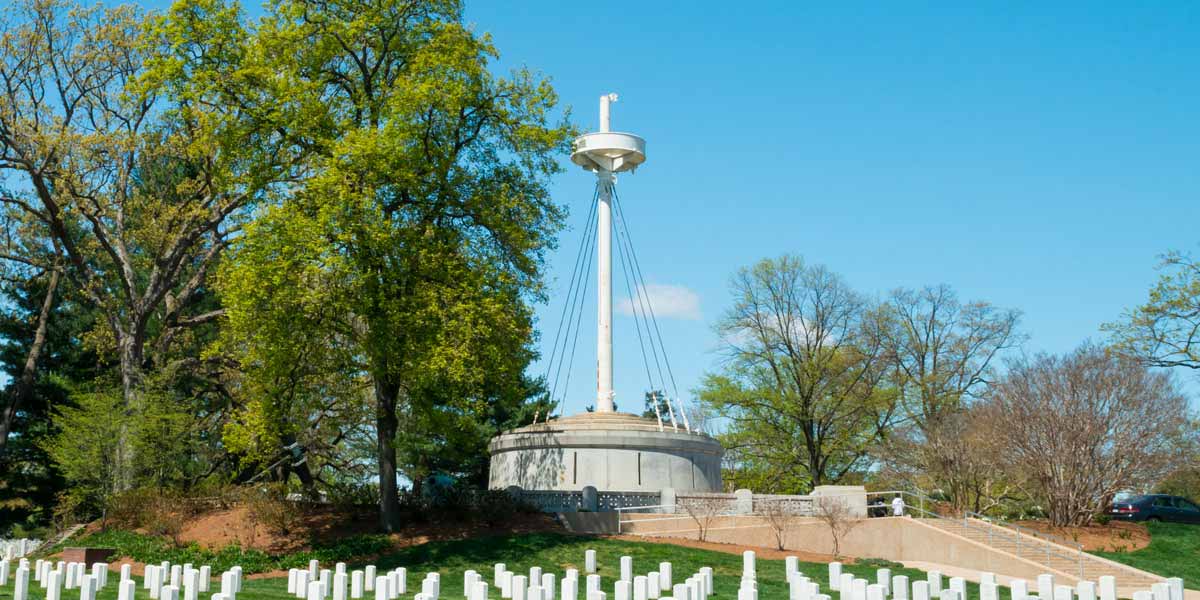History & Facts
About Arlington National Cemetery
Arlington National Cemetery history is a microcosm of the nation. It is the final resting place for war heroes, veterans and freed slaves as well as luminaries in science, engineering, medicine and government. Consider the following interesting facts about Arlington National Cemetery.
The National Cemetery encompasses 639 acres overlooking the Potomac River across from Washington, D.C. The burial ground was established on May 13, 1864 on land confiscated from Confederate General Robert E. Lee. Annually, more than 4 million people visit the National Cemetery. The National Cemetery, Memorial Drive, the Military Women’s Memorial and Arlington House, also known as the Custis-Lee Mansion, were added to the National Register of Historic Places as the Arlington National Cemetery Historic District in April 2014. The cemetery has approximately 8,500 trees from 300 different species. Three of the trees are the largest of their kind in Virginia.
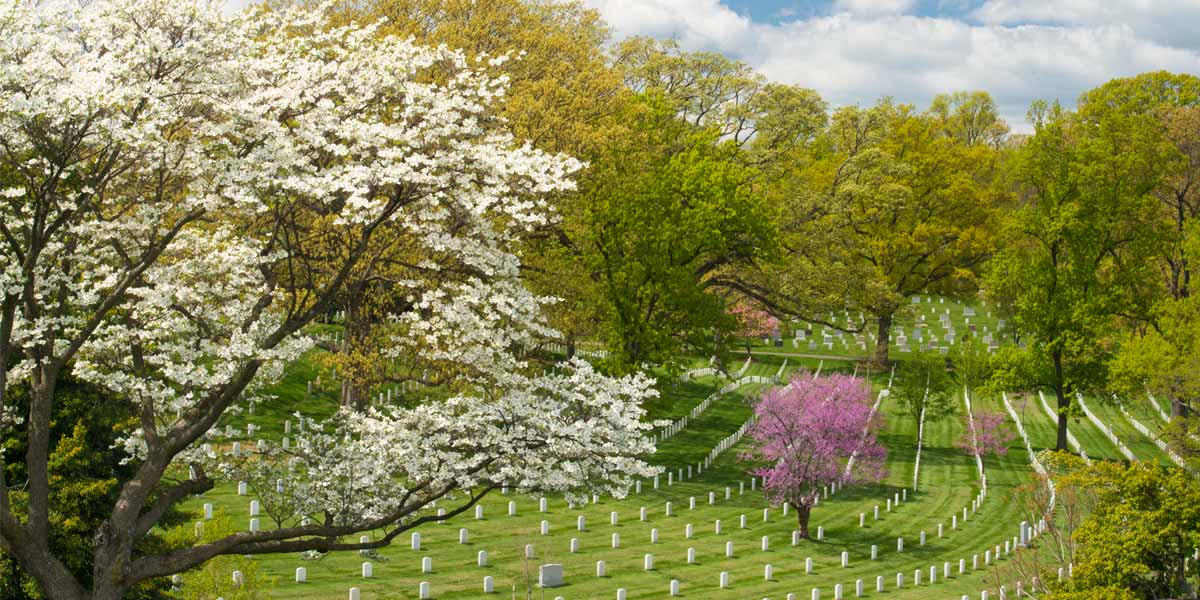
George Washington Parke Custis, the adopted grandson of President George Washington, originally owned Arlington Estate. Robert E. Lee’s wife, Mary Anna Randolph Custis inherited the property. The Lee family abandoned the estate when Virginia seceded at the start of the Civil War. Union troops occupied the property on May 24, 1861. Arlington House became a Union Army headquarters and the estate was incorporated into the defensive works around the capital.
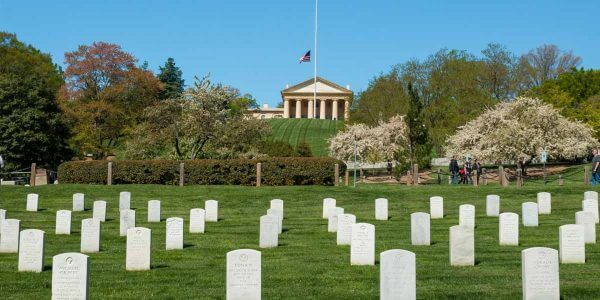
As the number of Union war dead began to exceed the space available in local cemeteries, additional burial grounds were required. Quartermaster General Montgomery Meigs selected Arlington for its serene atmosphere. The U.S. Supreme Court ruled in 1882 that the federal government had illegally seized the land. Rather than force the federal government to exhume and move the graves, Custis Lee, Robert’s son, sold the property for $150,000, which is equivalent to more than $3.2 million in 2015. The government representative at the ceremony was President Abraham Lincoln’s son, Secretary of War Robert Todd Lincoln, who is buried in the cemetery.
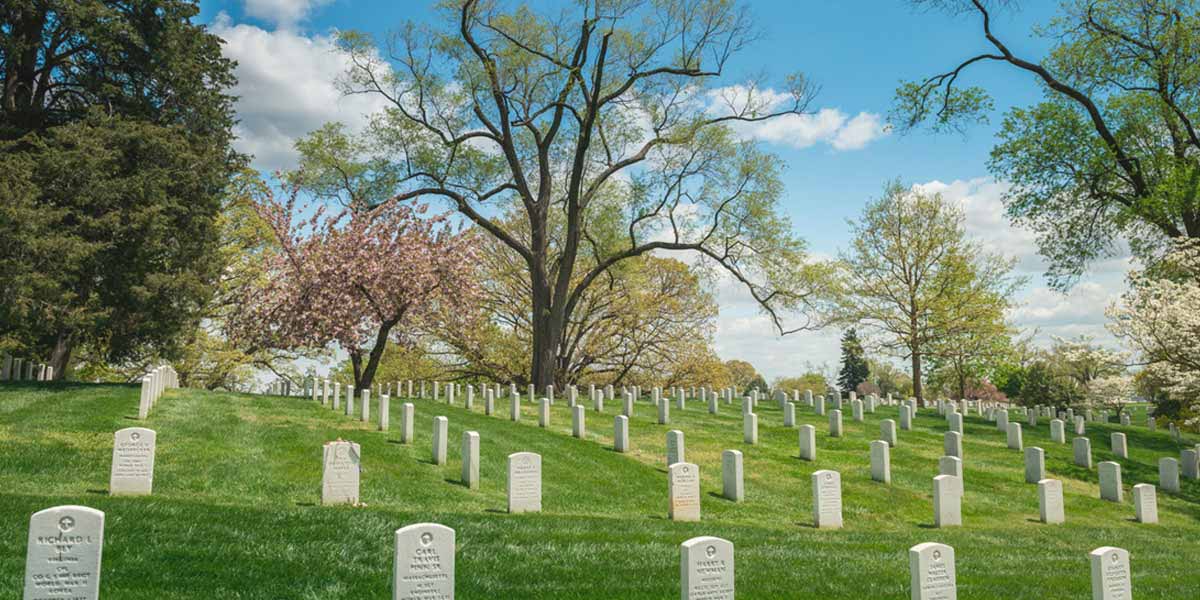
Up to 30 funerals take place each day. Flags at the cemetery are flown at half-staff from one-half hour before the first scheduled memorial funeral service until one-half hour after the last service of the day. Every Thursday before Memorial Day, a small flag is placed in front of each headstone. President Herbert Hoover was present at the first Memorial Day ceremony at Arlington in May of 1929. Each president of the United States sends a wreath to the cemetery on Memorial Day, Veterans Day and the birthdays of Presidents William Howard Taft and John F. Kennedy, who are buried in Arlington.
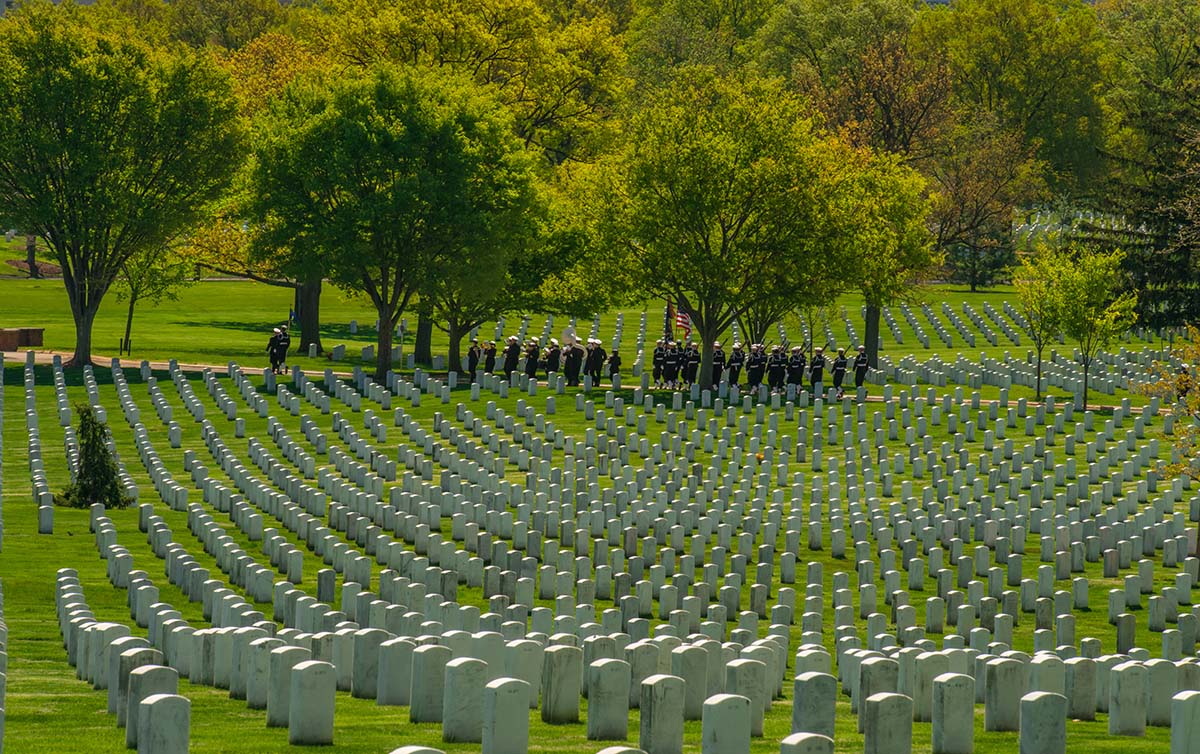
The Tomb of the Unknown Soldiers is guarded 24-hours a day by soldiers from the 3rd Infantry Regiment, which is known as the Old Guard. Made from Yule marble from Colorado, the tomb contains the remains of service members from both World Wars and the conflict in Korea. The unknown remains from the Vietnam War were exhumed and later identified using DNA. The Vietnam crypt remains empty. Advancements in DNA testing may mean that all future remains will be positively identified so there likely will be no further interments in the tomb.
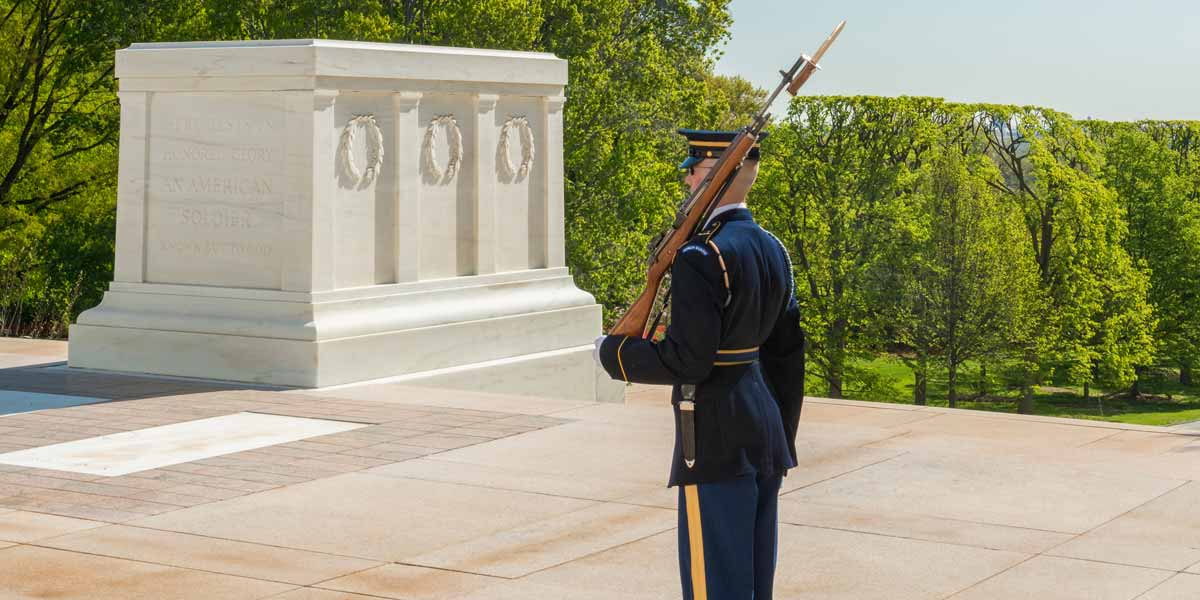
In addition to The Tomb of the Unknown Soldiers, Arlington contains other monuments and memorials. These include the Space Shuttle Challenger Memorial which honors the crew of STS-51-L who died on January 28, 1986 shortly after liftoff. A similar memorial honors the crew of STS-107 who perished when the shuttle Columbia was destroyed during reentry on February 1, 2003. There are also monuments to the Military Women’s Memorial and a Cross of Sacrifice honoring Americans who fought with Canadian Forces during both World Wars and Korea. Other memorials honor those who died on Pan Am Flight 103 when it exploded over Lockerbie, Scotland and in the Pentagon attack on September 11, 2001.
